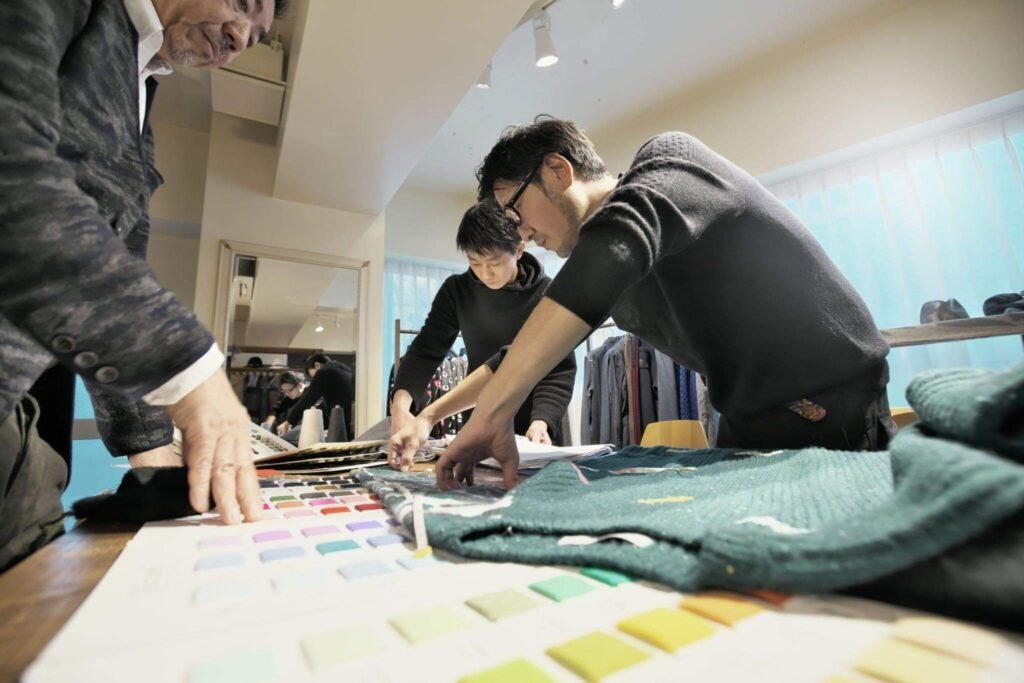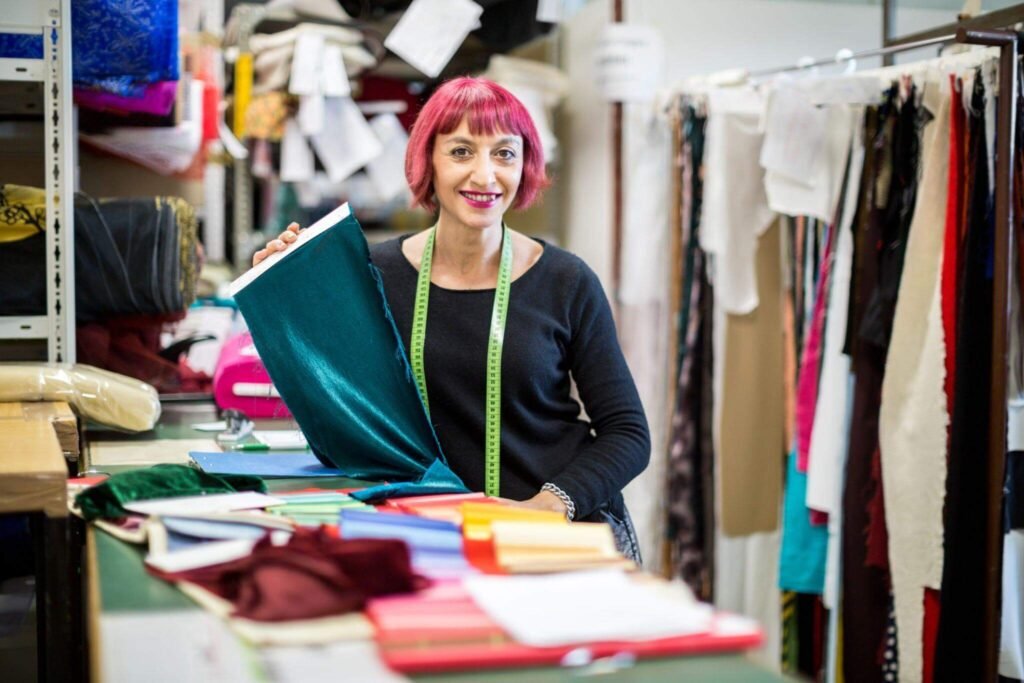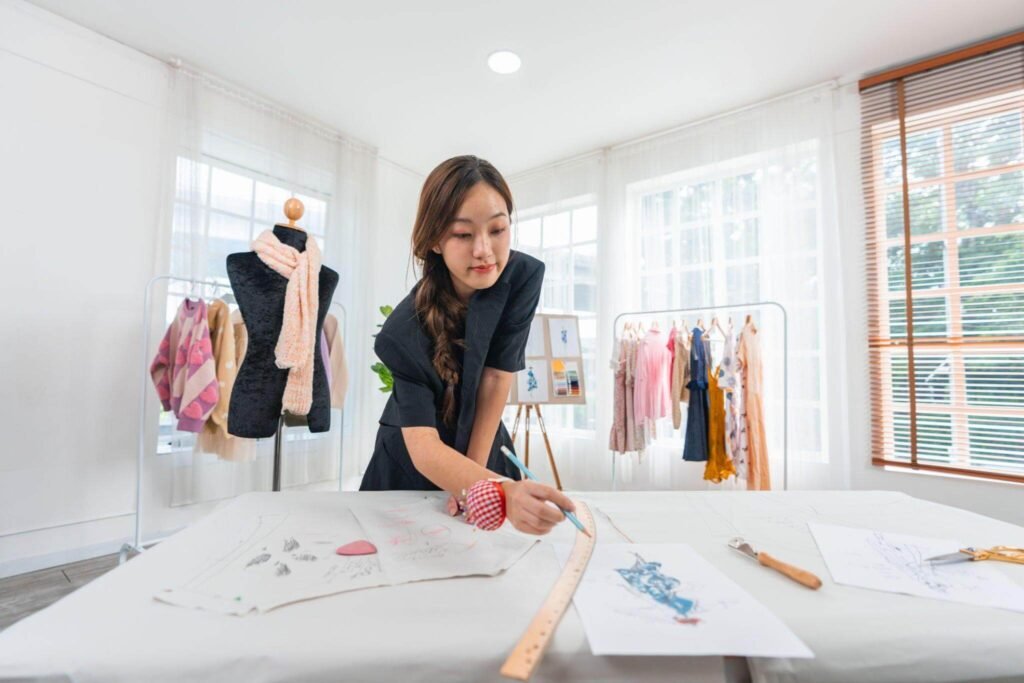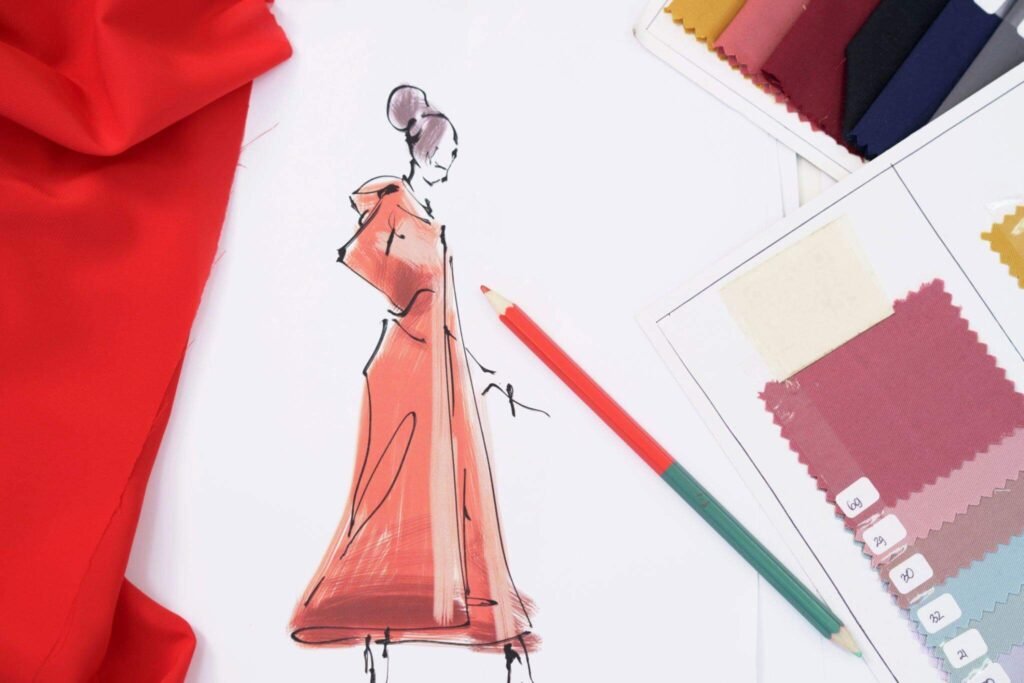Twill Fabric Explained: Structure, Benefits & Apparel Applications
The U.S. apparel market is currently valued at over $365.7 billion in...
So you’re ready to get your clothing line into production? That’s an exciting step! But before you can start churning out those t-shirts and jeans for your adoring customers, there are some important garment samples you need to familiarize yourself with.
As a clothing designer, knowing the 12 different types of sampling will ensure your production goes smoothly and the end products meet your standards. Whether you’re a pro or just getting started in the fashion world, clothing samples are key to bringing your vision to life and avoiding costly mistakes.
In this guide, we’ll walk you through what the sample size in fashion is, why it’s important, and how reviewing it carefully will set you up for success. Get ready to become a sample clothing expert—knowledge is power, friend! Once you’ve got these down, you’ll be ready to watch your designs go from sketches on a page to high-quality clothing ready to hit the racks.
Let’s dive in!

So you’re getting ready to manufacture your clothing line—that’s exciting! An important step is creating samples. Garment samples allow you to evaluate fit, construction, quality, and design before full production. There are 12 main types of garment samples you should be familiar with.
Prototype samples, development samples, and design samples
The first physical iteration of the prototype garment was created in accordance with the artwork during the product development phase. The main purpose of this sample is to see the design. The fabric and colour of the clothing are not taken into consideration in this sample.
It allows you to perfect the pattern and make adjustments before creating samples in the actual production fabric.
Mock-ups are essential in situations where the idea might not translate as effectively on paper as it does on fabric. It has no trimmings and only serves to determine whether the garment is wearable. Not every design calls for a mock-up, so not every kind of clothing sample manufacturer uses
Next are size-set samples, one sample for each size in the size range. These are used to evaluate how the garment will fit on actual body types for each size. For tops, dresses, and bottoms, you’ll want a size 4, 6, 8, 10, 12, and 14 as a minimum.
Size-set samples are made to ensure the measurement of each size. Usually, size-set samples are made covering all colour combos.
Then there are pre-production samples, also known as salesman samples. These are made in the actual production fabric and are used to show buyers, take photographs for marketing, and make a final check that the garment is ready for production. You’ll want at least 2 to 3 samples for each style.
The samples are made using the actual yarn, fabric, and colour that the models would wear during a photo shoot for the catalogue. With the photo attachments, the buyer comments on the fitting requirements and issues with the dimensions. In order to get feedback from his or her customer(s) or retailer(s), the buyer also met with them. Orders are confirmed in terms of colour, quantity, size, etc. For this sample, the actual material and colour must be used.
Once pre-production samples are approved, you can move on to counter-production samples. These are the first set of samples off the production line, used to ensure quality standards are being met before full-scale production begins. It’s best to order at least 500–1000 units from at least one country for every 500–1000 units being produced.
To check the quality of the job and demonstrate the factory’s expertise, this sample was created. For this sample, the type of clothing and its colour is not taken into account.
Fit or sizing samples are also important, especially for fitted styles. These samples, one for each size, are tried on live models to evaluate and confirm the fit, sizing, and proportions for each size before production. Any needed adjustments can then be made.
After a real measurement, a fit is prepared. The fitment is being tested with this sample. The fit of the clothing is checked on a live model.
The term “digital garment sample” refers to samples of clothes created using software that displays the 3D form of the garment. The consumer can view the garment fit, fabric fall, pressure points (tight fitting), and movement of the digital model on the screen using the digital sample.
Many purchasers and made-to-measure consumers opt for digital garment samples thanks to technology and to shorten the time required for sample approval. The buyer accepts the screen presentation as equivalent to a physical sample when providing comments and feedback on the sample.
When bulk fabric and accessories are produced internally, the plant creates pre-production (PP) samples using the actual material. To reassure the buyer that the bulk materials are on hand for production, samples are made.
The firm gives production samples to customers to guarantee that bulk orders are being manufactured in accordance with their requirements, following technical standards, and using authorized samples. Buyers seek reassurance that the right materials are used and that line craftsmanship meets the required standards of quality.
When the first production goes online, samples called TOP (online samples) are collected. Some buyers frequently ask for a TOP sample to make sure the production is adhering to the pre-production sample.
Samples used for shipment are those that represent the finished product. The samples confirm that the goods were supplied in accordance with the samples.
There are a few other sample types, like wash tests, red tags, and wearer trials. But with a solid understanding of these 12 core samples, you’ll be well on your way to ensuring your clothing line is perfectly on point before full production begins!

So you’re ready to learn how to start a clothing line. Before you begin full-scale manufacturing, you’ll need to create samples. Apparel samples are prototypes used to evaluate the fit, construction, and overall quality of a garment before bulk production.
There are many different types of samples used in the apparel industry. The first is a garment spec sheet vs. a tech pack for clothing. These outline the design, measurements, fabrics, trims, and construction of the garment. Next, come the pattern samples to test the initial patterns and ensure accurate sizing and fit.
Once the patterns are approved, you’ll make pre-production samples. These include:
After pre-production samples are approved, you can move on to production samples or salesman samples. These are the first round of production-quality garments that are used to show buyers or photographed for marketing purposes.
Finally, there are TOP samples, or marker or grader samples. These full-size samples are used as a guide for production to ensure consistent sizing and assembly across all sizes.
By investing the time to thoroughly sample and refine each garment before production, you’ll avoid costly mistakes and delivery delays down the line. While it may seem tedious, sampling is a crucial step that will ultimately lead to high-quality, well-fitting products your customers will love.

The sampling procedure starts with this step. The buyer sends the technical pack through the merchandiser at this point. All the requirements to make a garment are in the tech pack.
A CAD program is used to create the pattern at this point. Although CAD is more common and simple than hand drawing patterns, it is not always used. Utilizing computer technology to create actual or virtual items is known as computer-aided design (CAD).
The ultimate objective of this division is sample-making. Following the creation of the pattern, the sample is created using the pattern set.
The size is set in accordance with the Tech Pack when the sample is created. The sample is repeated if there is a problem.
Immediately following the buyer’s inspection of the sample, a pre-production meeting is scheduled. Both the merchandiser and the sample manager are still present during this meeting with the buyer or his representative.
Upon the sample’s completion Grading is complete. The same design may come in different grades. Grading is carried out to distinguish between samples and patterns.
The samples have been graded. The software for markers receives the design. The pattern in the cloth is set according to the software’s instructions. Fabric can be conserved by effectively utilizing the marking software. For the production of markers, Viyellatex uses Gerber Garment Technology (GGT).
Now that the pattern has been supplied to the cutting equipment, the cloth is cut for the finished product.

So now you have it—a crash course in the 12 essential garment samples you need to know about in the clothing production process.
Learn from each round of samples, get feedback from experts and customers, and make improvements. With experience, the sampling process will become second nature and a key part of how to get clothing samples made. You’ve got this! Now create some samples and make your production dreams a reality. The fashion world awaits!